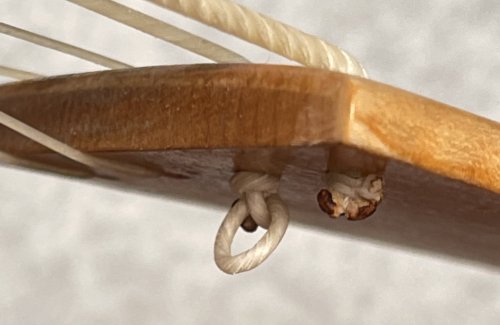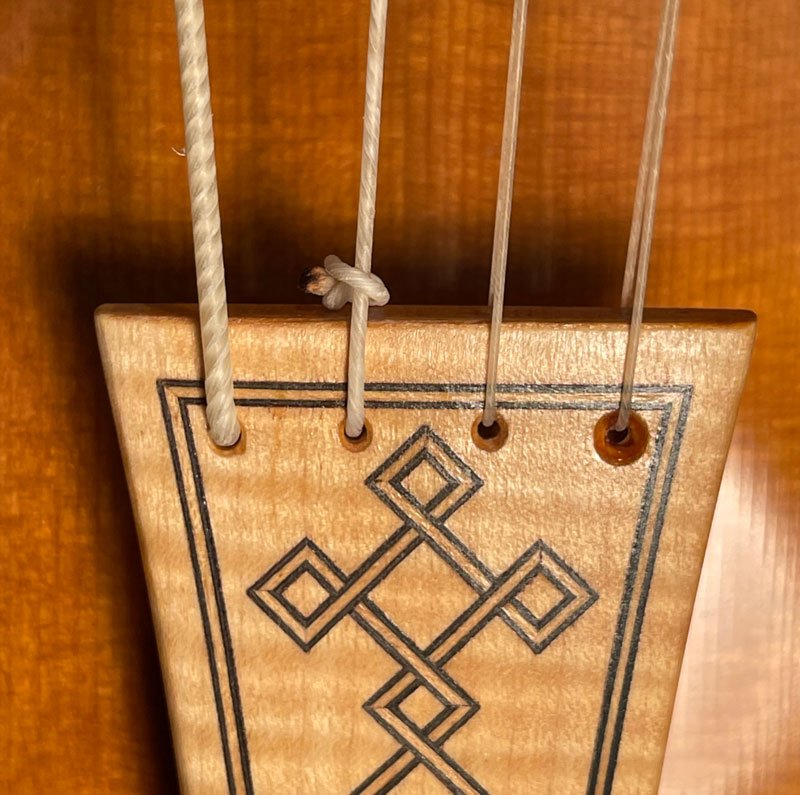< Back to Articles
Tying String Knots
Pass the end of the string through a loop to make an overhand knot as in Figure A.
Bring the end around and through the knot as in Figure B.
Burn the end so the end has a mushroomed shape.
Pull the string to tighten the knot against the end as in Figure C.
All strings require a knot at the end to hold them onto the instrument's tailpiece. Many players like to tie their own knots, but Gamut Music will tie the knot for you as an additional service if you want. (Wound strings come with knotted ends by default.) The type of knot that we use includes a loop, and it can be unclear how best to handle that feature.
There are two ways the loop can be used in attaching the string. One way is to ignore the loop and simply pull the knot against the underside of the tailpiece, as in the picture below.
The second way is to pull the loop to the front of the tailpiece, passing the string through it. That will bind the end to the tailpiece, as in the images below.
Either method works well, so you can use the method that best suits your needs and aesthetics. For more information about tying Gamut strings, visit our Articles page.
#
Hand-made in the USA by Gamut Music, Inc., a leader in the revival of early music strings and instruments. Gut strings are not intended to be used with fine tuners or string adjusters, and those devices should be removed before installing the gut string on the instrument.
All Gamut Academie strings (pure gut and gut/metal-wound) are made with beef serosa unless they specifically say "Sheep Gut." All pure gut Tricolore violin and viola strings are made with sheep gut; gut/metal-wound Tricolore and all Red Diamond strings are made with beef serosa.
Gamut gut string gauges are approximate (≈) diameter. Meaning, that while a ≈0.60mm string is polished in the workshop to a diameter of 0.60mm, changes in ambient humidity, temperature, shipping, and storage conditions can cause to string to expand or contract slightly.
Gimped gut strings and custom gauged equal tension strings are gauged with the equivalent-gauge (=) system. This means that the gauge listed, such as =1.50mm, indicates that the string is approximately equal in weight to a plain gut string of that diameter. Of course, because the wire is much heavier than gut, the string will be much thinner than a plain gut string.
More information about Gamut gut strings, string types, gauges, and string tensions can be found on our FAQ/Articles page. Not finding an answer to your question? Please contact us.



